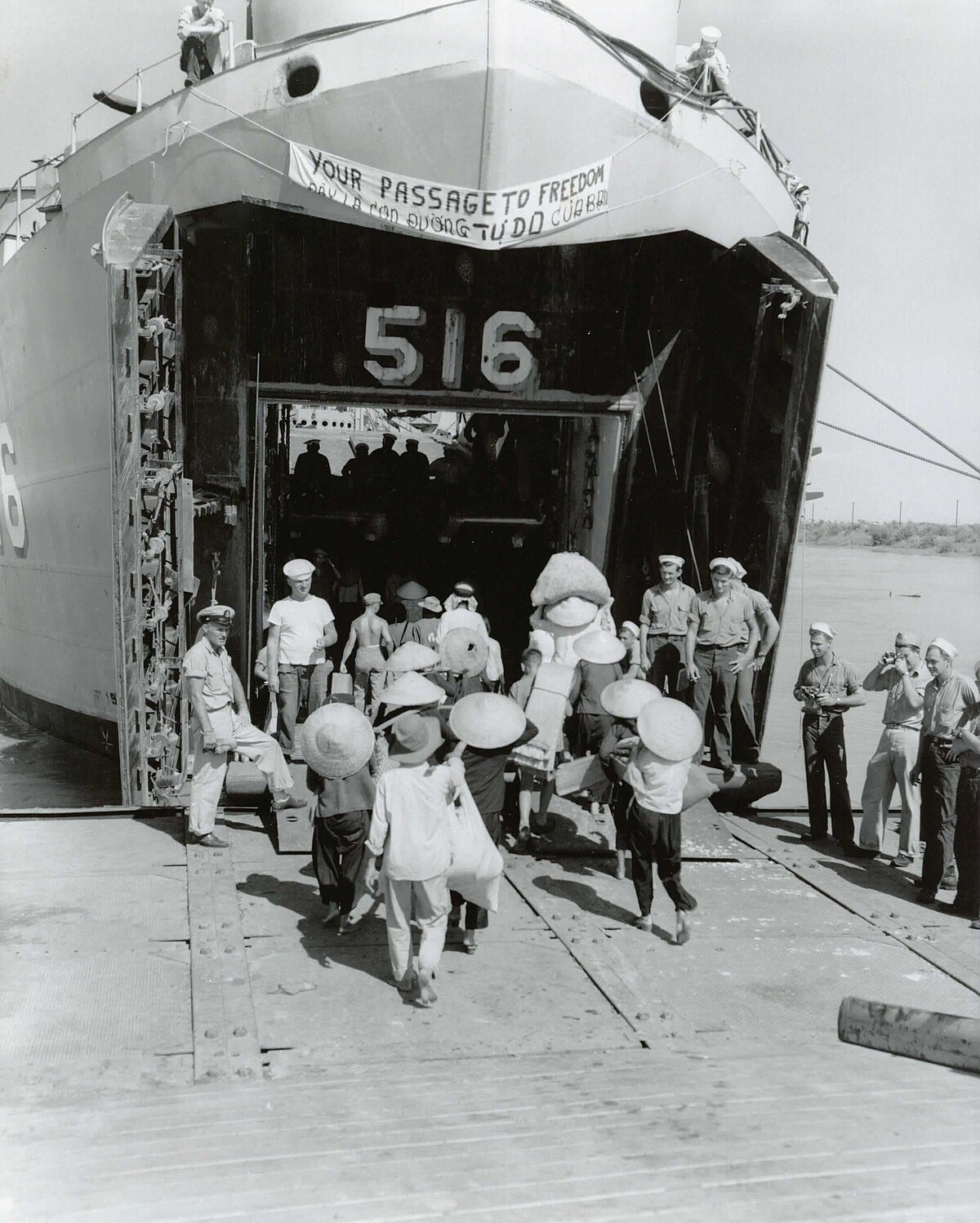
Operation Passage to Freedom
VietnamUnder the terms of the Geneva Accords, civilians were allowed to move freely between the two provisional states for a 300-day period. Elections throughout the country were to be held in 1956 to establish a unified government. Around one million northerners, mainly minority Catholics, fled south, fearing persecution by the Communists. This followed an American psychological warfare campaign, designed by Edward Lansdale for the Central Intelligence Agency (CIA), which exaggerated anti-Catholic sentiment among the Viet Minh and which falsely claimed the US was about to drop atomic bombs on Hanoi. The exodus was coordinated by a U.S.-funded $93 million relocation program, which included the use of the Seventh Fleet to ferry refugees. The northern, mainly Catholic refugees gave the later Ngô Đình Diệm regime a strong anti-communist constituency. Diệm staffed his government's key posts mostly with northern and central Catholics.
In addition to the Catholics flowing south, over 130,000 "Revolutionary Regroupees" went to the north for "regroupment", expecting to return to the south within two years. The Viet Minh left roughly 5,000 to 10,000 cadres in the south as a base for future insurgency. The last French soldiers left South Vietnam in April 1956. The PRC completed its withdrawal from North Vietnam at around the same time.
